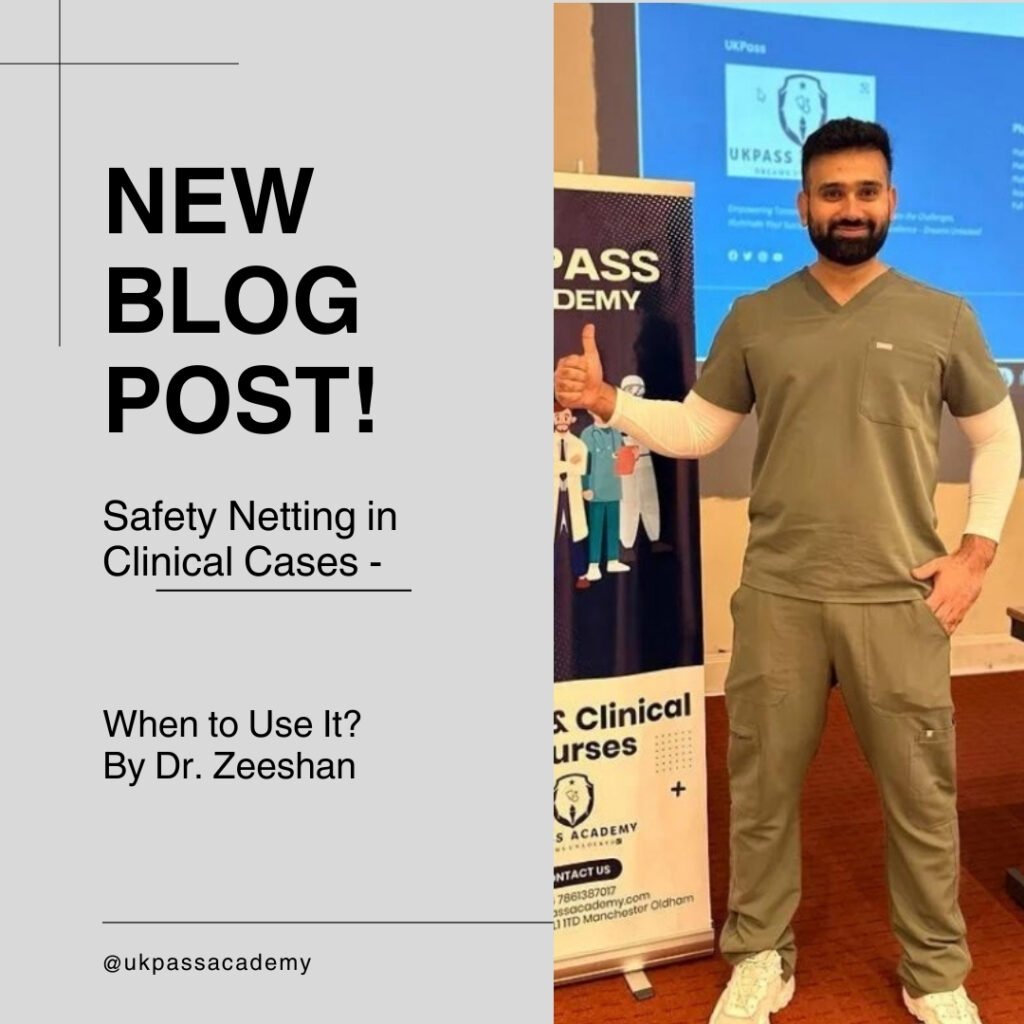As healthcare professionals, one of the critical aspects of our role is to ensure that patients receive comprehensive care, including proper guidance on what to do if their condition deteriorates or if they experience concerning symptoms. This process, known as “safety netting,” is an essential component of effective patient management, particularly in scenarios where patients are being treated at home or in the community.
In this blog post, I’ll address two crucial questions that often arise during clinical consultations and exams like the PLAB 2, RCA, or CSA: 1) Do I always need to do safety netting? and 2) If I need to do it, how do I fit it in effectively before the consultation ends?
Do I Always Need to Do Safety Netting?
The straightforward answer is no, you don’t always need to do safety netting in every clinical case. The decision to provide safety netting instructions should be guided by the appropriateness and necessity of doing so based on the specific scenario.
There are certain situations where safety netting is crucial and considered a critical aspect of safe clinical practice. For instance, if you’re treating a patient for a chest infection at home with antibiotics, it’s essential to inform them of the warning signs or symptoms that would warrant seeking prompt medical attention, such as fever, hemoptysis (coughing up blood), or worsening shortness of breath.
However, there are other cases where safety netting may not be as crucial or even necessary. For example, if a patient with long-standing osteoarthritis comes in to discuss adjusting their pain medication due to a recent flare-up, providing detailed safety netting instructions about signs of septic arthritis (e.g., fever, swelling, redness) may not be appropriate or relevant to the clinical scenario.
The key is to use your clinical judgment and expertise to determine when safety netting is appropriate and essential for the patient’s well-being. If you feel that safety netting is necessary, then it’s crucial to address it during the consultation.
How to Fit Safety Netting into the Consultation
One common mistake that many healthcare professionals make is leaving safety netting until the end of the consultation and hoping to have enough time to address it. This approach can be problematic because consultations often run short on time, leading to either rushing through the safety netting instructions or missing them altogether.
Instead, I recommend incorporating safety netting as one of the key issues to be addressed during the initial phase of the management plan, typically within the first 60 to 90 seconds. This approach ensures that safety netting is firmly established as an integral part of the consultation, reducing the risk of it being overlooked or rushed through.
Let’s consider the example of a patient presenting with a chest infection. During the initial management plan, you might structure it as follows:
“Mr. Smith, regarding your chest infection, there are a few things we need to discuss. Firstly, we need to initiate antibiotic treatment, and we’ll talk about the specific medication, dosing, and potential side effects. Secondly, since you mentioned that you’re a smoker, we should discuss how smoking can increase the risk of infections and explore any support you might need to quit. Thirdly, you raised the question of getting a chest X-ray – while I don’t think it’s necessary at this stage, we can discuss the pros and cons. Finally, I want to go through a couple of symptoms to watch out for that would indicate the need for you to seek medical attention promptly, as chest infections can worsen quickly. Before we begin the antibiotic treatment, let’s start with the safety netting aspect.”
By structuring the management plan in this way, you’ve clearly established safety netting as one of the key issues to be addressed, alongside other essential components like treatment, lifestyle factors, and investigations. Even if time runs short and you’re unable to provide the specific safety netting instructions, the assessor or clinician will recognize your intention to do so, which is better than not mentioning it at all or attempting to hastily squeeze it in at the very end.
It’s important to note that while safety netting should be mentioned early on, you can still provide the detailed instructions later in the consultation, once the other pressing issues have been addressed. The key is to acknowledge its importance upfront and create a natural flow for addressing it when appropriate.
Conclusion
Safety netting is a crucial aspect of patient care and should be incorporated into clinical consultations when appropriate and necessary. However, it’s essential to recognize that not every case requires safety netting instructions. Use your clinical judgment to determine when it’s appropriate, and if it is, ensure that you address it as one of the key issues during the initial management plan.
By following this approach, you’ll not only demonstrate your commitment to providing comprehensive patient care but also increase the chances of effectively communicating safety netting instructions without feeling rushed or overlooking this critical aspect.
Remember, effective communication and patient education are fundamental to delivering high-quality healthcare. By mastering the art of safety netting and incorporating it seamlessly into your consultations, you’ll enhance patient outcomes and solidify your reputation as a skilled and conscientious healthcare professional.

